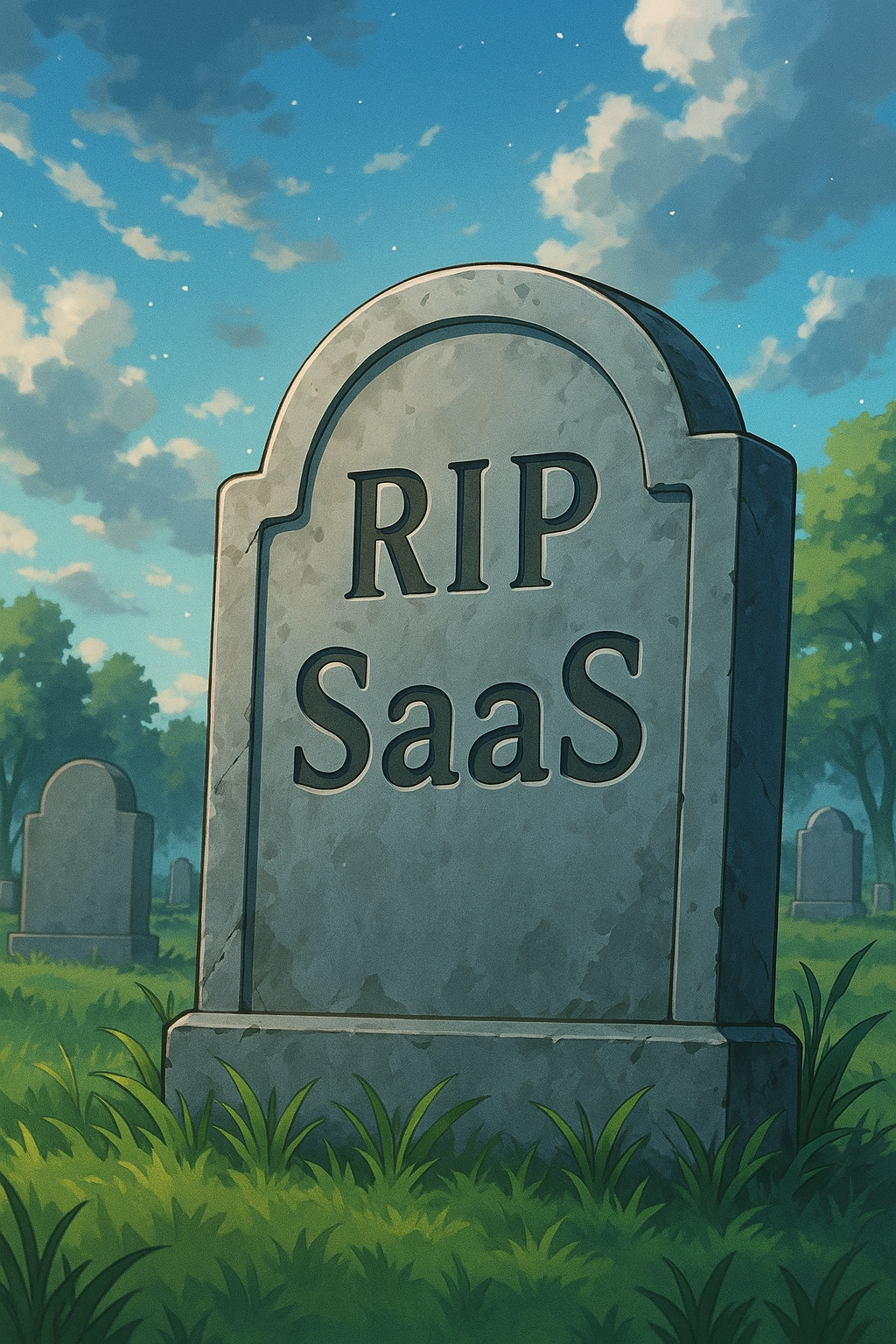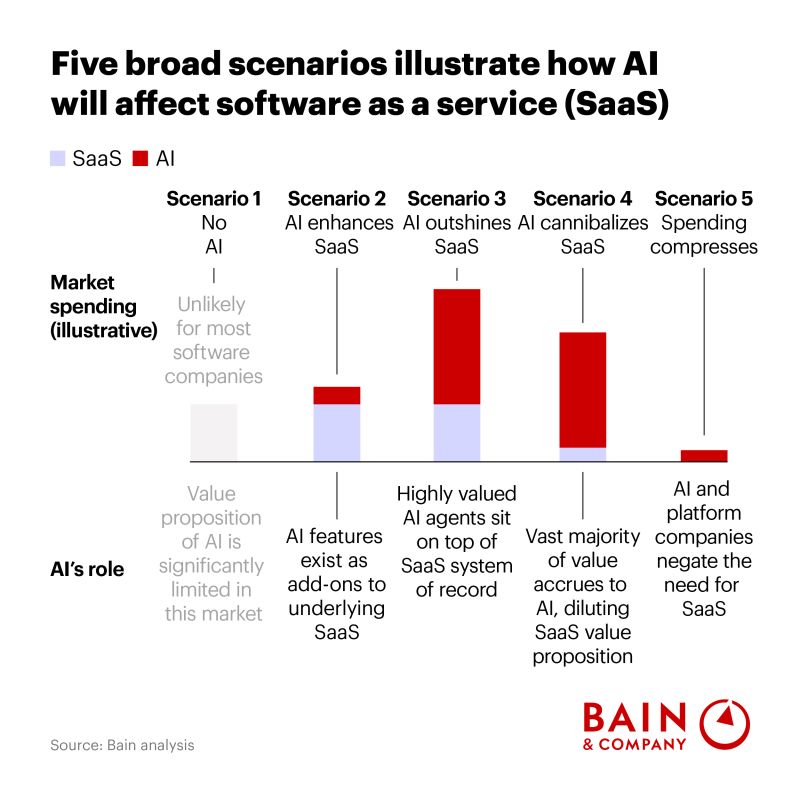
I've had many conversations lately where someone else voiced a conclusion I'd quietly reached myself. I hadn't said it out loud—partly to avoid sounding too apocalyptic in these disruptive times, but mostly out of a sense of melancholy at watching the passing of an old friend: the application.
My entire career in tech has revolved around either building applications or building the platforms that support ecosystems of applications. Now I find myself contemplating what a post-application world might look like. How will the vast structures built over the past 20+ years to support web and cloud applications (with paradigms stretching back to Ada Lovelace’s time) transform when the application is no longer the basic building block of how end users interact with computers?
It’s logical to look at the current landscape and think, “Well, agents are really just a rebrand of applications.” But what would it mean if agents truly replaced applications? We’re not the only ones asking this question—Microsoft’s CEO Satya Nadella even suggested that in the coming “agent era,” the notion that business applications exist [as we know them] will collapse”, with their logic moving into an AI-driven layer The purpose of an AI agent is to perform a task more like a person than a traditional software tool. So, to imagine the impact of agents on applications, it helps to look back to a time before software applications ever existed.
For example, take accounting in small businesses. Fifty years ago, if you ran a small business, you’d hire a bookkeeper. You’d hand them your paper ledger and they would manage the accounts. If you wanted to know something, you would call them up and ask. Then the personal computer revolution came along and introduced a new class of tools.

At first, there was Lotus 1-2-3, then Microsoft Excel. These weren’t dedicated accounting programs, so while spreadsheets lowered the barrier, they were mostly used by accountants to modernize their paper books. With the rise of applications like Intuit’s Quicken and then QuickBooks (in the 90’s), enough business logic was baked into software that non-CPAs in small businesses could start doing accounting on their own. This democratization trend continued through the SaaS boom. Previously specialized functions, from building a website to managing HR, were turned into online services with friendly UIs and wizards, allowing non-specialist users to DIY their way through tasks that once required an expert.
Agents, however, act more like people than applications. In the not-so-distant future, rather than using your SaaS accounting software to DIY your bookkeeping, you might just "call up" your AI accountant agent, give them your raw financial data, and they’ll take care of it. You would only ever see a spreadsheet or accounting interface if you really wanted to. In essence, we’d be right back to a dynamic similar to having a human bookkeeper—except now it’s an AI agent handling the books behind the scenes.
Today’s SaaS applications stand on a whole ecosystem of other supporting services: cloud hosting, observability and monitoring, customer analytics, feature flag management, testing frameworks, project management tools, code repositories, UI design systems, and so on. Some of these services will still be needed by AI agents (we'll always need hosting, data storage, and some form of code management), but other parts of this ecosystem could be significantly disrupted. In fact, all parts of the software development stack are likely to be reshaped by a realignment where the agent is the primary actor instead of the end user.

Returning to the accounting example: if an agent is doing the accounting, you don’t need to manually interact with a spreadsheet application at all. If you want to see “the books,” your agent will just present you with a fit-for-purpose report on request. Spreadsheet software becomes irrelevant for that use case, and the traditional UI (menus, buttons, forms) designed for a human bookkeeper becomes extraneous. There’s no need to painstakingly develop and test accounting screens, manage feature flags for UI rollouts, or maintain a complex front-end CX for the user. The agent just needs the rules and the data in order to take care of the rest. In general, if the user is an AI agent, then many of the trappings of applications (the visual interface, the workflow guidance, the training for users) can be stripped away. This is a profound shift: software might still exist under the hood, but it’s purpose-built for an AI to use, not a human.
As AI-powered code generation progresses, it’s not hard to see how more and more companies will simply build the software they need on demand. Recent AI advancements have already made building high-quality software significantly easier, spawning a wave of startups aiming to let people create their own custom tools (sometimes called vertical AI agents) with minimal effort. The cost and time required to develop software is trending downwards as AI copilots can handle large chunks of coding and system design. Why buy a one-size-fits-all SaaS app when your team can generate a tailored solution in days using an AI assistant?
Meanwhile, on the consumer end, the growing capacity of frontier models means that a lot of everyday needs can be met with generalized chat platforms. Do I need the Amazon website or the Expedia app when an AI agent can do the shopping or plan the trip for me via a simple conversation?
If SaaS applications (as we know them) are “dead,” what will endure from the application paradigm? There are a few fundamental components that likely must endure in an agent-centric world:
Data and back-end systems: We will still need databases and transaction processing systems behind the scenes. In fact, agents require new systems of integration and data to make them functional.
Domain-specific logic or expertise: General AI models have limits. There will remain niche domains or proprietary processes that a one-size AI doesn’t fully understand. And businesses will always require differentiating processes in order to be innovative and competitive.
Workflow design: Every successful application encodes workflow. Good apps feel good because they let you accomplish tasks with minimal friction, helping you avoid mistakes and reducing mental load. It’s hard to imagine that kind of optimized experience being recreated purely through an ad-hoc chat.
The proposed solution so far from the AI platforms has been to invite developers to build applications on top of their ecosystems. But, given the complexity of enterprise and domain specific software along with the competitive churn and lock-in risks of these platforms, it is hard to see how they would be a viable solution for most application creators.
So, what could a new AI-native application layer look like? Perhaps it would be something owned by the end user or organization, operating in a standardized layer adjacent to the various LLM platforms. It could leverage vendor-provided tools for data storage, UI rendering, or domain-specific functions—but these would serve as modular components, almost like Lego kits. We might still build software, but we’ll be making the bricks and letting the AI assemble the final product in real time.
Are applications already dead? Not entirely, at least, not yet. But the application paradigm that has existed and evolved in a fairly consistent trajectory for the past several decades is undergoing a fundamental change from static tools that humans learn to use, to fluid agents that learn how to work like humans. The familiar app isn’t disappearing overnight, but its role is changing fast. The next “killer app” might be an AI-native app, or it may be an agent, or it might be an app for agents.
Build with Connectifi and let us help you, accelerate time to value, remove complexity, and reduce costs. Talk to us now.